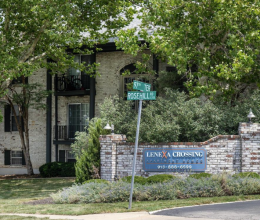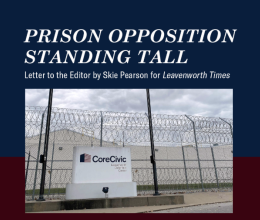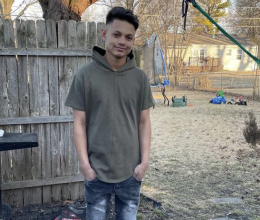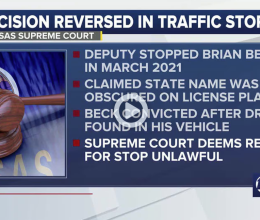
Nearly 50 men spent hours in a small holding cell asking for water, food and medication. Instead, officers dressed in riot gear sprayed the room with rubber bullets and launched “flash bang” grenades. The men had overflowed a toilet in protest, and the ground was covered in putrid water. Smoke filled the air. Loud “booms” rang in their ears. Some men began to cry. Officers handcuffed them with zip-ties that cut into their wrists. TOP VIDEOS The video player is currently playing an ad. Kneeling in water that soaked his socks and pants, Diego Rafael Medina Rodriguez, 26, thought: I’ve been through this before. But this was not the tear gas and bullets he’d endured over a decade ago at protests in Venezuela. This was a United States federal detention center. It was April 15, 2025, and he and the other men had just arrived there. “We were trying to get their attention, because they didn’t want to give us anything,” said Medina Rodriguez. “There were people that needed insulin, people that take their medication at the same time daily. So we took matters into our own hands with the only option we had.” Migrant detention centers are overcrowded as a result of the Trump administration’s mass-deportation campaign, and the government is housing detainees wherever it can — including five Federal Bureau of Prison facilities across the country under a February contract. A Miami Herald investigation has found those detainees face harsh conditions, crumbling infrastructure, use of force and lack of counsel, according to legal documents and interviews with more than a dozen immigrant detainees, Federal Bureau of Prisons employees and lawyers. While some say conditions are better than at nearby migrant detention centers, legal access is far more difficult. U.S. Immigration and Customs Enforcement shows an average daily population of 152 migrant detainees at the Federal Detention Center in Miami — but 350 to 400 men are held there at any given time, according to several officers who spoke to the Herald anonymously for fear of retribution. The number changes rapidly as more than 100 men can be shuffled in and out every week. ICE calculates averages across fiscal year 2025 which began in October, four months before the Bureau of Prisons facilities had migrant detainees. The result is a dramatic undercount of the detainee population. One BOP employee in Miami called the 152 number a “bold-faced lie.” A spokesperson for ICE referred the Herald to the Bureau of Prisons for this article. A spokesperson for Miami’s federal detention center said immigration questions should be directed to ICE, and that the BOP would not comment on individual cases. “The Federal Bureau of Prisons (BOP) can confirm we are assisting the United States Immigration and Customs Enforcement (ICE) by housing detainees, and will continue to support our law enforcement partners to fulfill the administration’s policy objectives,” read the BOP statement. On the top two floors of Miami’s detention center, immigrant detainees sit in small cells with broken air conditioning, malfunctioning toilets and out-of-service elevators. Officers and detainees both said the facility is not an appropriate place to hold the men — who are not there for criminal convictions, but instead have ongoing civil cases to determine if they can stay in the U.S. “I’ve seen some inmates just sit there and cry,” said one officer. “Some cry all day. Grown men, just crying.” Eunice Cho, an attorney with the American Civil Liberties Union’s Prison Project, said a Kansas prison faces similar conditions and added third bunks on beds to fit more immigrant detainees. While ICE data shows an average of 26 migrants, she said it’s closer to 80. Housing immigrant detainees in federal prisons, she said, is “profoundly disturbing.” “People who are in civil immigration proceedings have due-process rights,” Cho said. “And that includes the right not to be punished.” On May 29, Florida-based civil rights organizations wrote a letter to FDC Miami’s warden about inadequate legal access. Evelyn Wiese, a senior litigation attorney at Americans for Immigrant Justice, described the facility as a “black hole.” FDC Miami holds about 1,000 other men and women awaiting trial or serving their sentences. The public faces a void of information on who is being detained and where — as top Trump administration officials demand 3,000 immigration arrests a day from ICE officers. Detention numbers fluctuate or are unclear. Individuals are transferred frequently across the country. U.S. citizens have been mistakenly arrested. Officials have refused to release names of migrants sent to a naval base in Guantanamo, Cuba, and a prison complex in El Salvador. The Herald found that at least two detainees held in Miami’s federal detention center are green-card holders with legal permission to be in the United States. Javar Miller, a U.S. permanent resident since 2012, was detained in late January at Port Everglades in Fort Lauderdale, he said, on his way home from his father’s funeral in the Bahamas. Authorities wouldn’t tell him why, and the 43-year-old father was soon sent to FDC Miami. A lawyer later told him the government had opened removal proceedings against him over a years-old closed theft case. He was released on probation and he paid restitution in 2019. “This is not America, the land of the free,” Miller’s wife, Tasha, told Miami Herald reporters on the phone. “As you tear families apart, that’s tearing up the fabric of what you call the United States of America.” A concrete tower Under the agreement between the Federal Bureau of Prisons and ICE, immigrant men would be housed in designated units for a six-month period. The day after the contract was signed, BOP administrators across the country received a letter saying “deportable non-citizen detainees” will be considered “pretrial inmates.”
Read more at: https://www.miamiherald.com/news/local/immigration/article308076975.html...







